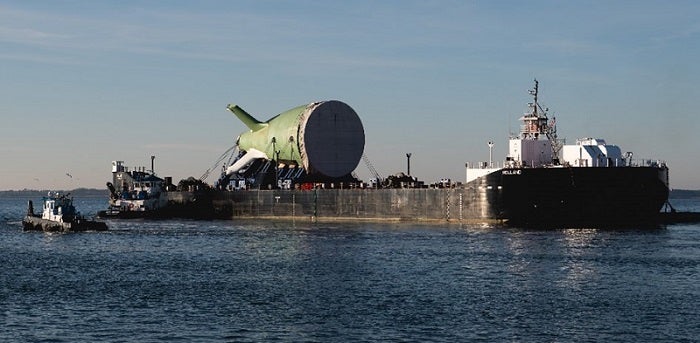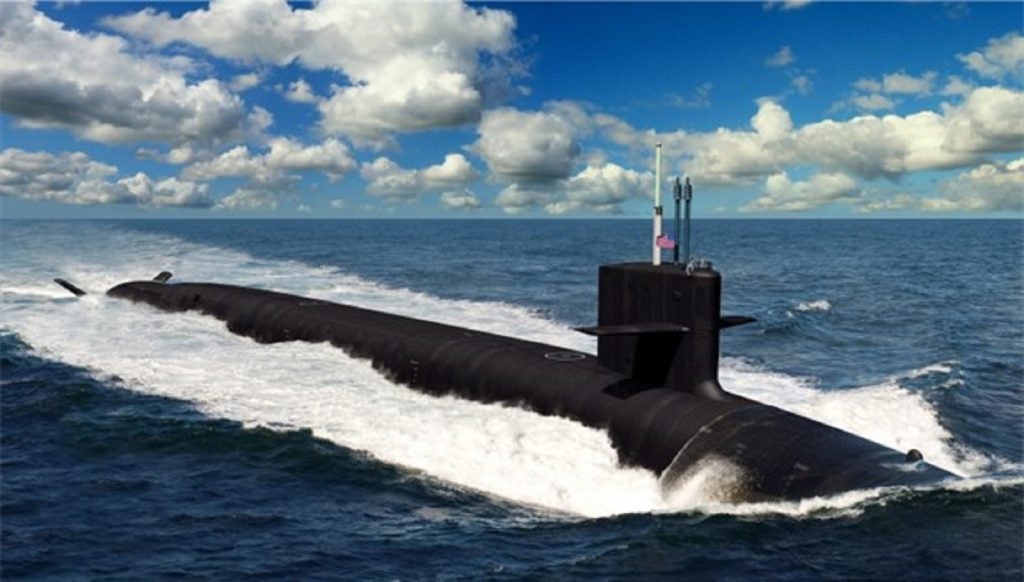This week, the US Government has made some progress in the construction and supply chain of its future Columbia-class ballistic missile submarine programme despite mounting pressure on industry.
HII’s Newport News Shipbuilding (NNS) delivered the stern of the first boat, the USS District of Columbia (SSBN-826), to General Dynamics Electric Boat (EB), a primary builder of the class, at its facility in Quonset Point, Rhode Island.
NNS is a major shipbuilding partner in the programme, constructing and delivering six module sections per submarine under contract to EB.
In addition, the Department of Defense also awarded Leonardo DRS, a Virginia-based defence supplier, a $3bn contract for the fleet’s electrical propulsion systems.
The electric-drive propulsion system is expected to be quieter than a mechanical drive system. The vessels will use a nuclear reactor to generate energy, which will be converted into electrical power to fuel the electric propulsion motor.

Intentions for the Columbia-class
It is hoped that the 12 new submarines will replace the current force of 14 legacy Ohio-class boats before they come to the end of their lifecycle in the 2030s.
They will support the US strategic deterrent mission. The Navy’s SSBN fleet carries 70% of the nation’s operational nuclear weapons.
Each boat will be armed with 16 Trident II D5 ballistic missiles that can carry up to 14 multiple independently targetable re-entry vehicles with W88 or W76 thermonuclear warheads reaching distance of 7,456 miles (12,000 kilometres).
Industry capacity remains an issue entering 2024
The US naval industrial base faces increasing pressure to deliver the new class – the country’s nuclear lynchpin – as well as other programmes such as the Virginia-class and maintenance, repair and overhaul of a growing number of surface combatants.
Edward Bartlett, the founder and CEO of Bartlett Maritime (BM), a corporation that assists the US Navy in the resolution of its shortfall, has frequently voiced concern in the past few months. The company has narrowed down the problem of industrial capacity to balance all the Navy’s needs.
As a result, BM’s proposal to rectify the backlog is the construction of submarine component repair facilities in northeast Ohio and an option to construct a new public naval shipyard for maintenance in Charleston, North Carolina.
These calls for capacity expansion remain despite the Government’s ongoing Shipyard Infrastructure Optimisation Programme (SIOP), a 20-year plan established in May 2018 to resolve this issue.









